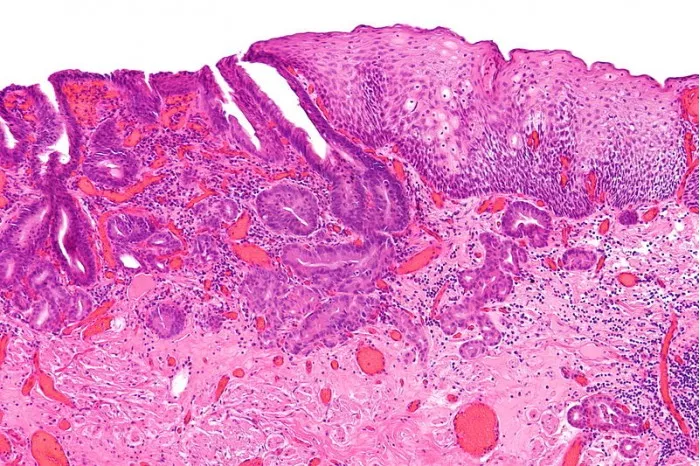Esophageal cancer is a kind of cancer that occurs in the esophagus. The esophagus is a long and empty tube connecting the throat and stomach. The esophagus helps carry the food you eat to your stomach, where it will be digested. Esophageal cancer usually begins with cells inside the esophagus. However, it can also occur anywhere in the esophagus. Esophageal cancer is the sixth leading cause of cancer death worldwide The incidence rate of the disease varies depending on where you live. Tobacco and alcohol use, as well as certain eating habits and obesity, may be associated with a greater risk of esophageal cancer

According to the database study of about 5million patients to be published at Digestive Disease Week 2022, the incidence rate of esophageal cancer in adults aged 45 to 64 almost doubled between 2012 and 2019, and the incidence rate of Barrett esophagus, a precancerous lesion, increased by 50%.
"This strong increase in prevalence should be of concern to doctors. If middle-aged patients are at high risk, we should consider more esophageal cancer screening," said Bashar J. qumseya, the study's lead author and associate professor of medicine and director of endoscopy at the University of Florida. "Whenever we see an increase in the incidence rate of any type of cancer, we should ask whether this is simply due to better screening, or the real increase in the incidence rate of disease. In our study, this is due to the latter."
The researchers examined oesophagoscopy, gastroduodenoscopy (EGD) rates throughout this period and found no evidence of an increase that might explain the prevalence data. EGD is a diagnostic procedure that examines the first part of the esophagus, stomach, and small intestine (duodenum).
According to the research, esophageal cancer and Barrett's esophagus are the most common among elderly white men, and the prevalence rate is the highest among those over 65 years old. However, the researchers found that the incidence rate of cancer in the 45-64 age group approximately doubled, from 49 to 94 per 100000 people, while Barrett's esophagus frequency increased by about 50%, from 304 to 466 per 100000 people.
Esophageal cancer is usually detected by endoscopy. It is usually a silent "killer" with few symptoms before it becomes advanced. Barrett esophagus -- the main precursor lesion of esophageal adenocarcinoma, which starts from the gland cells in the inner wall of the esophagus -- is mainly caused by chronic acid reflux. Other risk factors include older age, male sex, obesity, smoking and alcohol consumption.
Dr. qumseya said that middle-aged patients with multiple risk factors would benefit from early or more frequent screening and compare it with the benefits of early colorectal cancer screening. "Now many patients in the United States begin colonoscopy at the age of 45, so endoscopy at the same time can help capture more Barrett esophagus and esophageal cancer patients among patients with multiple risk factors," he said.
"From other analyses we performed with this data set, we know that even patients with four or more esophageal cancer risk factors did not undergo endoscopy," he added. "Therefore, from the perspective of patients and providers, we can do better."
This study is a cross-sectional analysis of electronic health record (EHR) data from the oneflorida clinical data research network, which covers more than 40% of Florida residents.
The researchers analyzed the records by three age groups: 18 to 44, 45 to 64, and over 65. Further analysis of the database is ongoing and the final results should be completed within the next six months.
Dr. qumseya pointed out several limitations of the study: it only covers adults living in Florida, so it does not necessarily represent the U.S. population. It is not a randomized controlled trial, a long-term follow-up of a group of patients. In addition, as with any database, the data itself can be problematic. The electronic medical record analyzed is the patient who visited the hospital or doctor's office, so the database does not indicate whether they have suffered from disease or whether the condition has been solved.
In the final analysis, the research team plans to re-examine the database and try to distinguish between two types of esophageal cancer - esophageal adenocarcinoma, which usually affects the lower esophagus; And squamous cell carcinoma, which affects the upper esophagus.